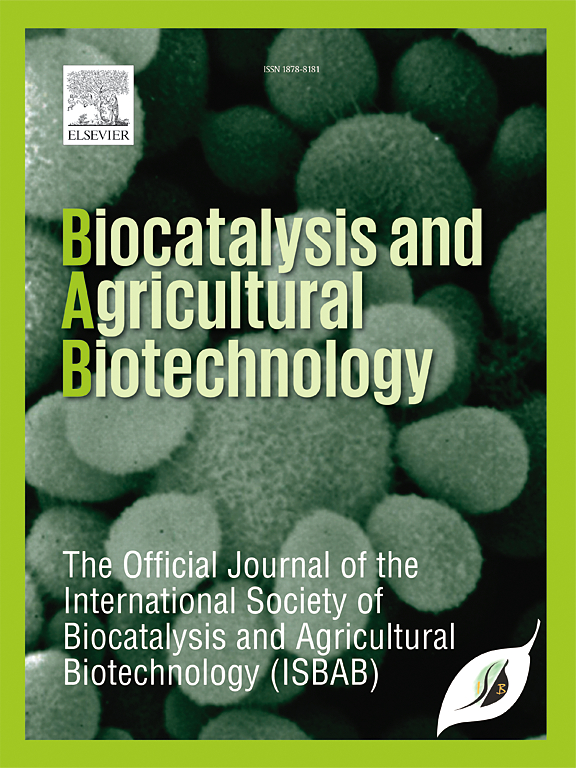Production of alpha-and beta-chitin, chitosan and protein hydrolysate from seafood processing wastes using an integration of lactic acid and digestive protease from fish viscera as alternative green extraction
IF 3.4
Q2 BIOTECHNOLOGY & APPLIED MICROBIOLOGY
引用次数: 0
Abstract
Utilization of seafood processing wastes through a green approach has been investigated due to growing environmental concerns. This study employed fish viscera protease in extracting α-chitin from shrimp shell (SS) demineralized using lactic acid and β-chitin from squid pen (SP). After optimization, fish viscera protease (50 U/g-shell) yielded 54% of α-chitin with the highest degrees of deproteinization (93.92%), and acetylation (92.54%), and a high crystallinity (87.96%). A lower deproteinizing efficacy of fish viscera protease was found for SP due to the high protein content in SP, which was 3.48-fold that of SS. The maximal protease (75 U/g-pen) gave 85.86% protein removal from β-chitin. Post-treatment using a minimal concentration of NaOH (0.25 M) was suggested to eliminate protein for up to 97.81%. With the increased protein removal, crystallinity of β-chitin increased from 53.48% to 82.20%. In chitosan production, β-chitin was more reactive to deacetylation than α-chitin. SP-derived chitosan exhibited excellent solubility and higher antimicrobial activity than SS-based chitosan. Protein hydrolysate recovered after extraction of chitin from SP displayed great DPPH antioxidant activity (EC50 = 0.37 mg/mL) while that fraction from SS with MW 3–10 kDa showed the best antioxidant activity (EC50 = 0.90 mg/mL). The results demonstrated an integration of lactic acid and fish viscera protease as promising alternative tool in a green extraction of α- and β-chitin for preserving native polymer and increasing product yield. Our alternative process also offers full utilization of seafood processing wastes to generate high-valued products.

求助全文
约1分钟内获得全文
求助全文
来源期刊

Biocatalysis and agricultural biotechnology
Agricultural and Biological Sciences-Agronomy and Crop Science
CiteScore
7.70
自引率
2.50%
发文量
308
审稿时长
48 days
期刊介绍:
Biocatalysis and Agricultural Biotechnology is the official journal of the International Society of Biocatalysis and Agricultural Biotechnology (ISBAB). The journal publishes high quality articles especially in the science and technology of biocatalysis, bioprocesses, agricultural biotechnology, biomedical biotechnology, and, if appropriate, from other related areas of biotechnology. The journal will publish peer-reviewed basic and applied research papers, authoritative reviews, and feature articles. The scope of the journal encompasses the research, industrial, and commercial aspects of biotechnology, including the areas of: biocatalysis; bioprocesses; food and agriculture; genetic engineering; molecular biology; healthcare and pharmaceuticals; biofuels; genomics; nanotechnology; environment and biodiversity; and bioremediation.
 求助内容:
求助内容: 应助结果提醒方式:
应助结果提醒方式:


